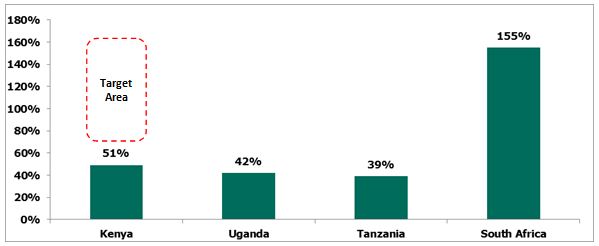Investors typically invest in well-known and liquid asset classes such as money markets, equities and fixed income, collectively referred to as “traditional investments” or “public markets”. As an ‘alternative’ to these traditional investments, there are other investments referred to as alternative investments such as private equity, real estate and structured products. While relatively illiquid and more complex, alternative investments offer higher and more stable returns over the long-term.
Investor’s focus is gradually shifting towards alternative investments due to increased investor education and global capital searching for lucrative returns available in the region. Demographic trends, including a young population and a growing middle class, alongside rapid urbanization and government’s sluggish pace in the provision of essential services, has created an opportunity for private capital to drive growth.
When analysing returns over the last 5 years, across various asset classes, it is evident that return in alternative investments is more lucrative than those available in traditional investments.
For example locally, real estate has registered the highest returns over the last 5 years, at 24 percent, as compared to traditional markets that have averaged about 13 percent, as can be seen in the graph below.
Average per annum 5-Year Return per Asset Class

Most investment managers in the region have a primary focus towards investments in the public markets. Initially, this was largely driven by stringent regulations, however despite efforts by regulators to spur investment in the alternative space, actual asset allocations are yet to shift. This can be largely attributed to fewer investment managers focusing on the alternatives space and need for better investor awareness about opportunities in alternatives. Comparing Kenya’s market capitalization to GDP, currently at 51. percent, to South Africa’s at 155 percent, it is evident that the bulk of the Kenyan economy is still in the unlisted markets. This means that there is a lot of money chasing few listed opportunities in the public markets, creating conditions where available investment opportunities could be pricey.
Listed Equities Market Cap to Total GDP
In summary, the improved investment environment due to stable macroeconomic conditions, and lower returns in the more developed markets point towards an increased allocation towards alternative investments. In Kenya, these trends indicate that there is still significant room for above average returns over the next 10 years in alternatives, mainly real estate and private equity.
By Shiv Arora.
Investment Associate – Cytonn Investment



































